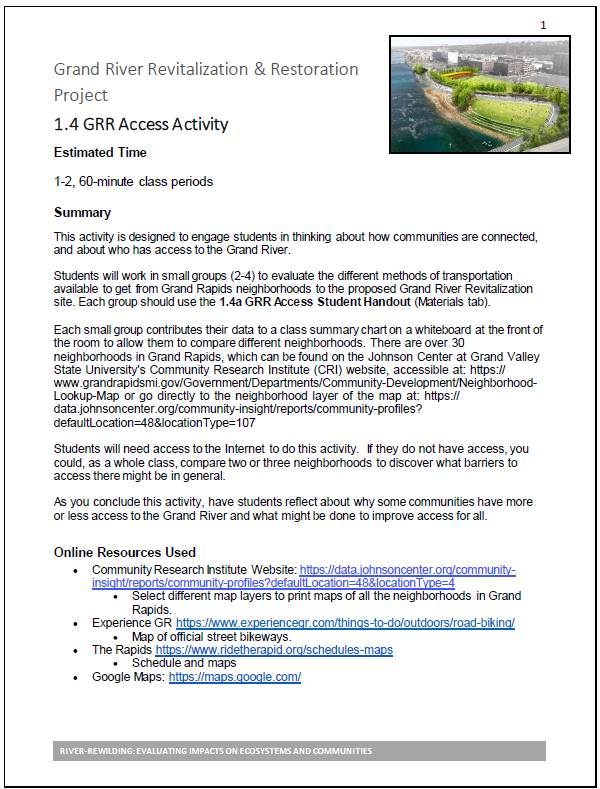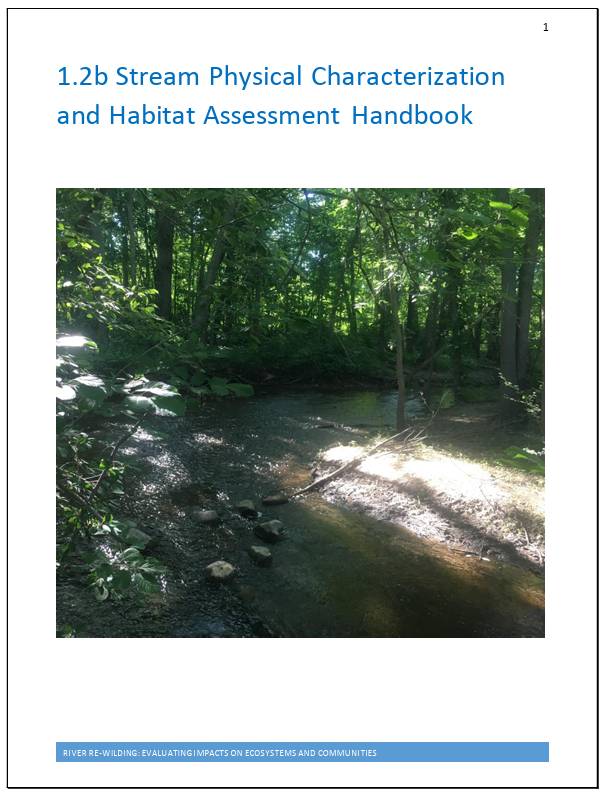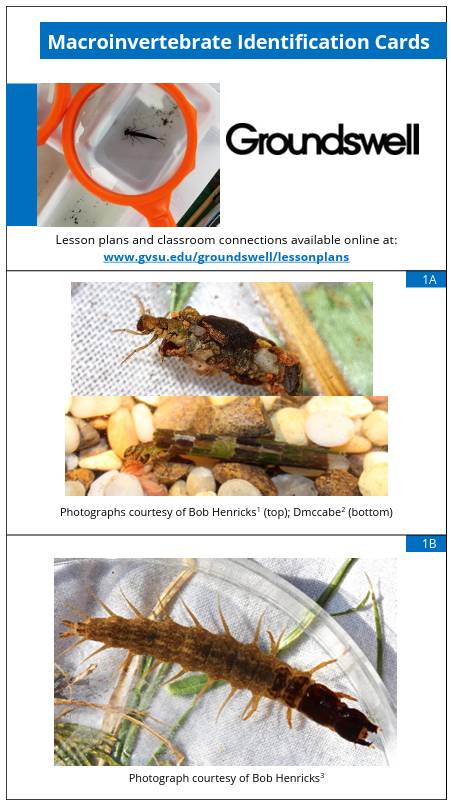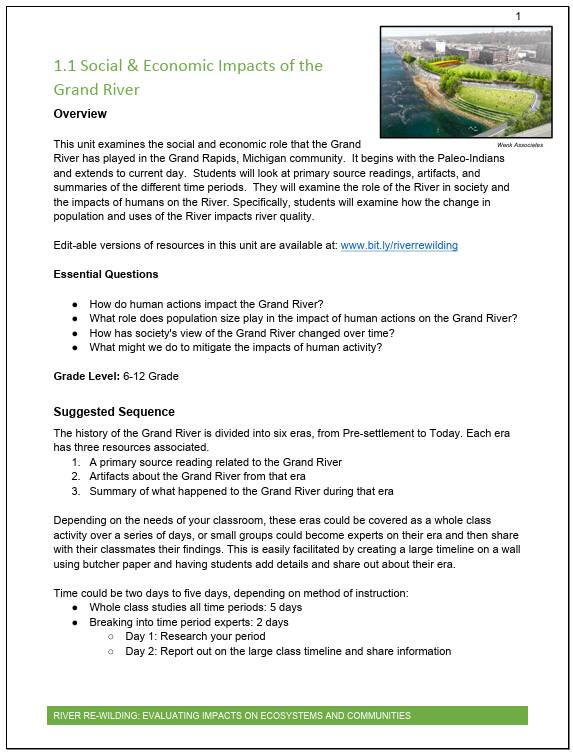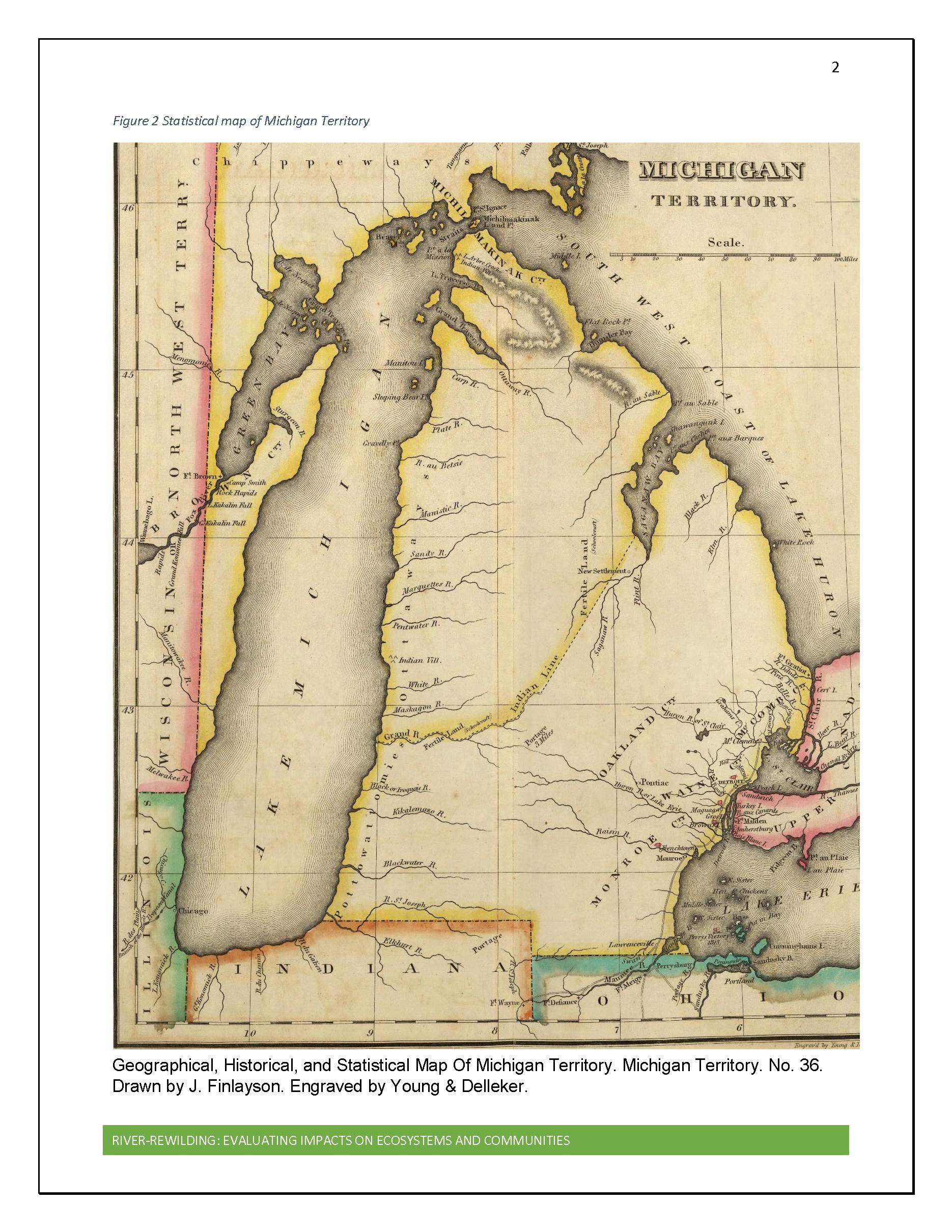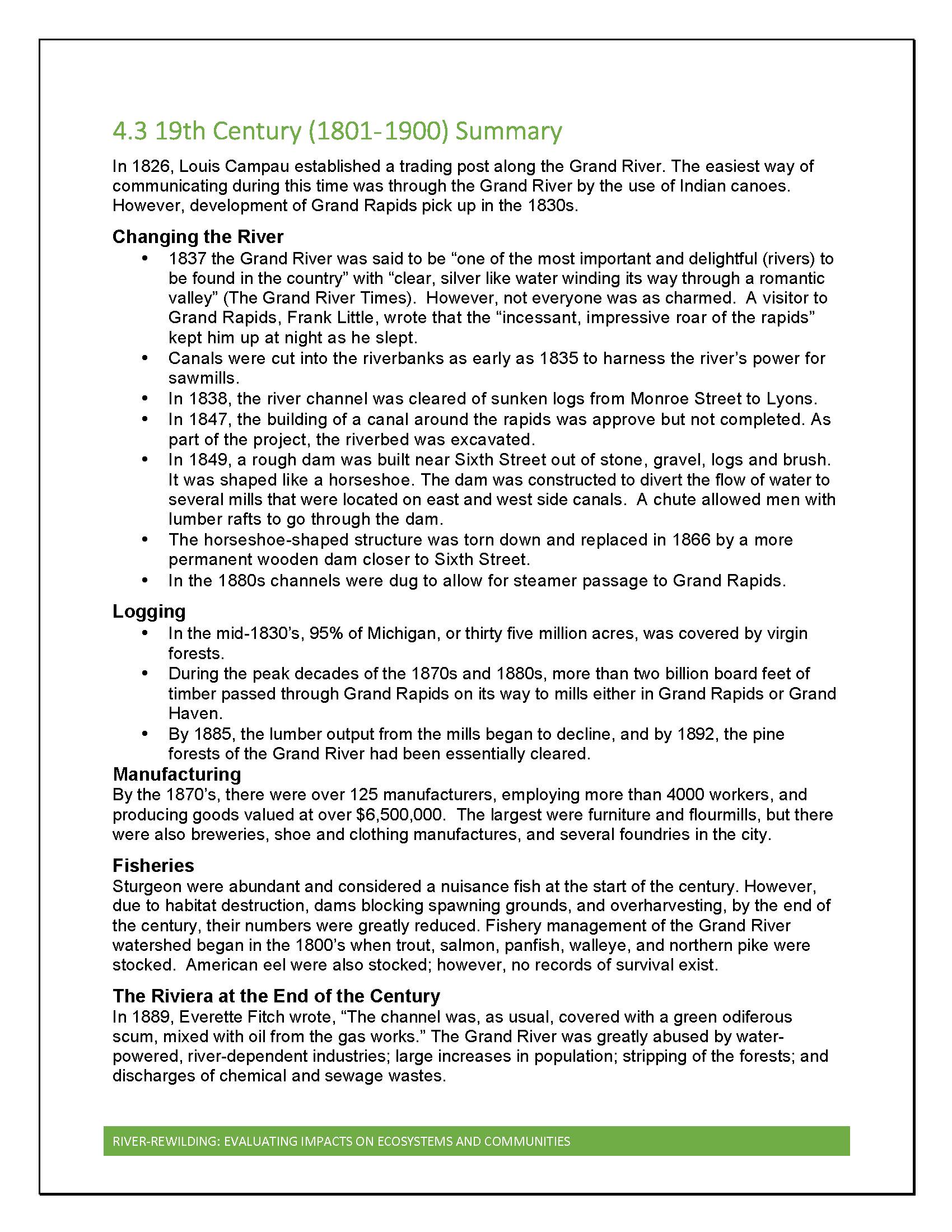River Rewilding: Evaluating Impacts on Ecosystems and Communities
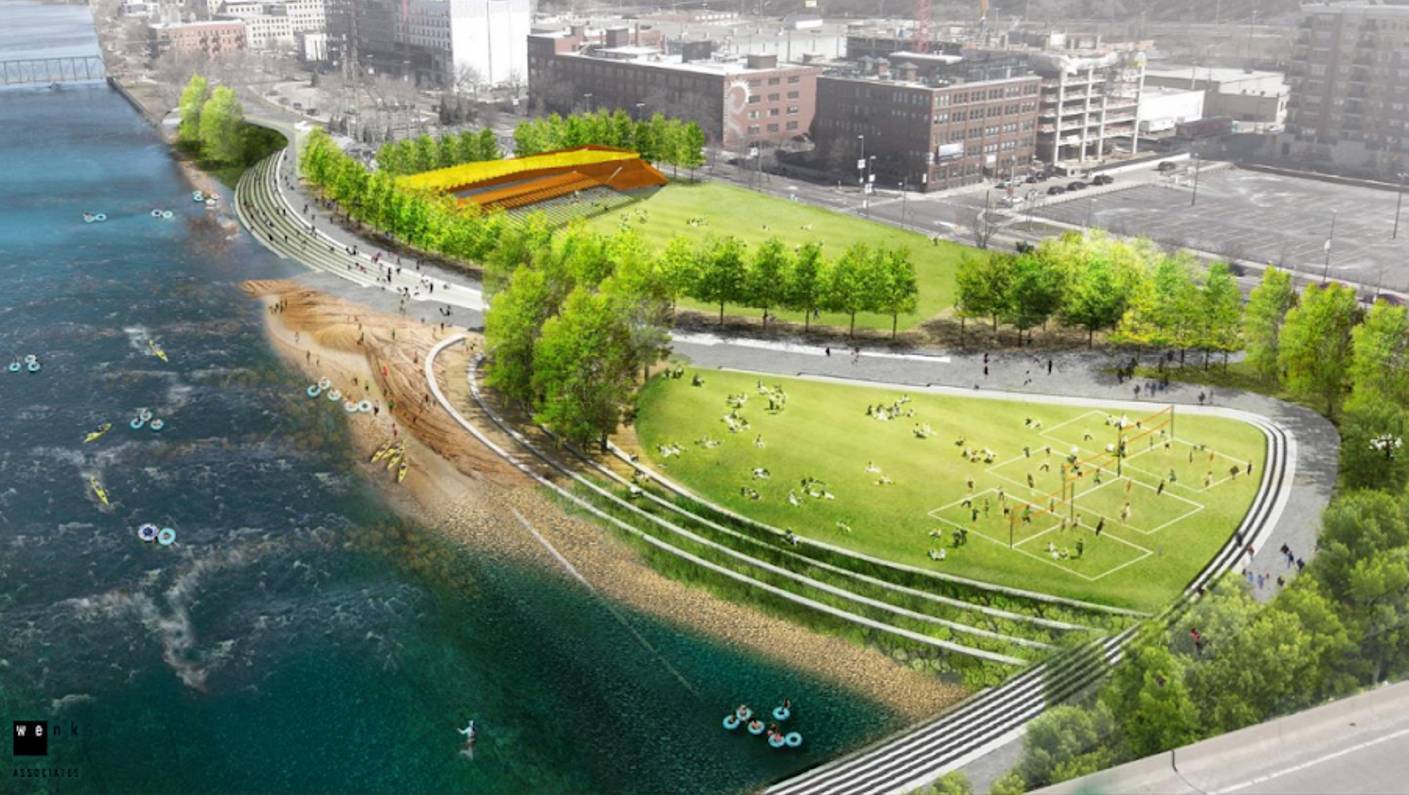
About
This collection contains units highlighting the social and economic, historic, and biological impacts of rewilding the Grand River through the Grand River Revitalization Effort.
More About This Resource
In the first unit, Grand River Restoration and Revitalization Project, students explore the Grand River Revitalization & Restoration Project. They look at the economic opportunities associated with the Grand River and community access to the Grand River. They then learn about two species impacted by the restoration: the lake sturgeon (a desired species) and the sea lamprey (an invasive species).
The next unit, Advanced Water Quality, has three parts: stream habitat assessment, macroinvertebrate analysis, and a macroinvertebrate design challenge. In this unit, students experience analyzing and interpreting streams' biotic and abiotic factors and designing and testing a macroinvertebrate sampler that mimics a stream habitat. This unit asks students to consider what actions could be taken to reduce human impacts and improve stream quality.
The final unit, Grand River Social and Economic Impacts, examines the social and economic role that the Grand River has played in the Grand Rapids Community. It begins with the Paleo-Indians and goes through today. Students look at primary source readings, artifacts, and summaries of different periods. They examine the river's role in society and humans' impacts on the river. Specifically, students examine how the changes in population and river use impact river quality.
River Rewilding Environmental Action Project Overview
Environmental Stewardship in Action
Brenda Perry, her high school students, and Eileen Boekestein discuss what it's like to implement a place-based project involving their school campus and the Grand River. Learn how their project will affect the Rapid Restoration happening in downtown Grand Rapids.
Unit 1: Grand River Restoration and Revitalization Project
Explore Unit 1
Check out all the resources for Unit 1: Grand River Restoration and Revitalization Project.
Students explore the Grand River Revitalization & Restoration Project in this unit. They will look at the economic opportunities associated with the Grand River and community access to the Grand River. They will then learn about two species impacted by the restoration: the Lake Sturgeon (a desired species) and the Sea Lamprey (an invasive species).
Unit 2: Advanced Water Quality
In this unit, students will consider what actions can be taken to reduce human impacts on local streams and improve stream quality. This Advanced Water Quality unit is packaged into three smaller parts: Part 1: Stream Habitat Assessment, Part 2: Macroinvertebrate Analysis, and Part 3: Macroinvertebrate Design Challenge.
The activities and lessons in each part have been developed to build upon one another, but they can also stand alone. Done in conjunction, students will experience analyzing and interpreting the biotic and abiotic factors in streams and designing and testing a macroinvertebrate sampler that mimics their stream’s habitat.
Unit 3: Grand River Social and Economic Impacts
This unit examines the social and economic role that the Grand River has played in the community of Grand Rapids, Michigan. It begins with the Paleo-Indians and extends to the current day. Students will look at primary source readings, artifacts, and summaries of different periods. They will examine the role of the Grand River in society and the impacts of humans on the Grand River. Specifically, students will explore how the change in population and uses of the Grand River impacts river quality.
Classroom Activities Professional Development
Grand River Revitalization Classroom Activities
Teachers and community partners gathered on the GVSU Pew Campus to learn about the cultural and economic aspects of the Whitewater Restoration Project occurring in downtown Grand Rapids on the Grand River. In this video, Brenda Perry, a Groundswell teacher, and Eileen Boekestein, EGLE Environmental Education Coordinator, introduce ready-to-use instructional activities and materials created by Brenda and Elizabeth Bush.


